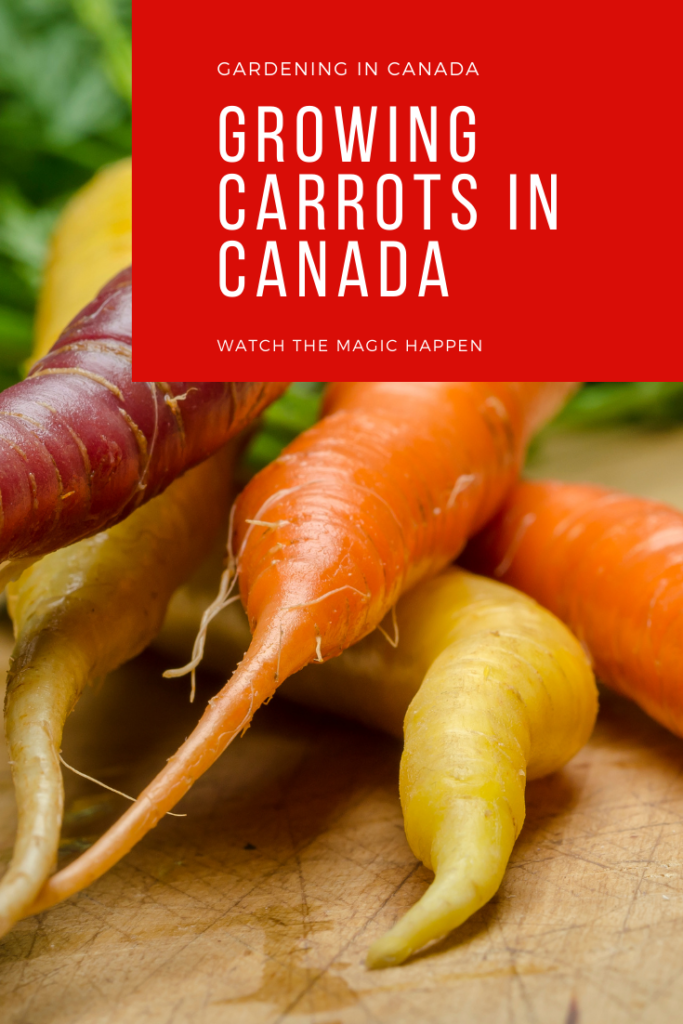- Canada’s Growing Zones Are Changing 2024 - January 12, 2024
- Attracting Wildlife To The Garden - May 16, 2023
- How To Garden Near A Septic Tank - May 9, 2023
The popular root crop carrots can be cultivated in a wide range of environments. Carrots can be difficult to grow in colder climates, but with the correct kind, soil, and care, you can get tasty, nutritious carrots.
If you are new to this blog my name is Ashley and I am a soil scientist. I am located in a Canadian Zone 3 and a USDA Zone 4. I write articles, make YouTube videos, Instagram & Facebook posts all designed for Canadians and Cold Climate gardeners using science-based methods. If you are looking for anything specific be sure to let me know in the comments down below.
Picking from a Wide Range of Options:
Carrots can be grown in colder climates, but only if the right variety is chosen. It is ideal to cultivate carrots in colder climates if they mature quickly and have a short growing season.
Here is a list of carrots that grow best in Canada:
Extraction of Substances from the Soil:
For optimal development, carrots need sandy, loose soil. That’s why you need to work on your soil before you grow anything. Soil structure can be enhanced by incorporating organic matter like compost or well-rotted manure, and drainage can be enhanced by mixing in sand or fine gravel. Carrots thrive at a pH level between 6-7.
The soil can be worked more effectively with a broadfork or the double-dig approach. Carrots do well in light, fluffy soil, so you may want to try planting them on a mound.
Planting a Seed
When planting seeds in a cold area, timing is key. Carrot seeds should be planted in a cold region between four and six weeks before the last spring frost. Earlier sowing exposes the seedlings to colder conditions, which can hinder germination. Plant the seeds either in the ground or in seed trays and then move the young seedlings outdoors after they have reached the appropriate size.
Do not attempt sparsely sowing with these seeds in an attempt to avoid thinning. The results will not be what you expected. Instead, watch my video on how I thin my carrots with sudo to reduce waste. Or if you want a way to simply see the seeds easier then go for a pelletized seed option. Such as this one here.
Preventing erosion via mulching:
To keep the soil moist and prevent the carrots from being damaged by the cold, mulching is a good idea. Mulching can be accomplished with a covering of straw or leaves. Additionally, if a severe frost is forecast, a cloche or frost blanket can be used to protect your carrots.
Watering:
In order to thrive, carrots need a steady supply of water. The soil, however, must not be too damp. When the soil feels dry to the touch, water your carrots, but don’t drown them.
Thining
Do it! Do not skip this step or you will have zero carrots at the end of the year. You can do the sudo thin style I do, but it needs to be done.
Harvesting:
When carrots reach a good size, usually between 3 and 4 inches (7 to 10 cm), they can be picked. In colder locations, allowing the carrot to experience a few light frosts might boost its sweetness. You have to try this to believe the flavour.
Storage
Check out my post on the 5 ways to store a garden carrot for up to 18 Months.
In conclusion, growing carrots in a cold climate can be tough, but it is possible to grow delicious, nutritious carrots with the correct variety selection, soil preparation, and care. Proper variety selection, soil preparation, timely seed sowing, covering and mulching, regular watering, and timely harvesting are all crucial to a successful crop. Fresh carrots grown at home using these methods will be available whenever you want them.

